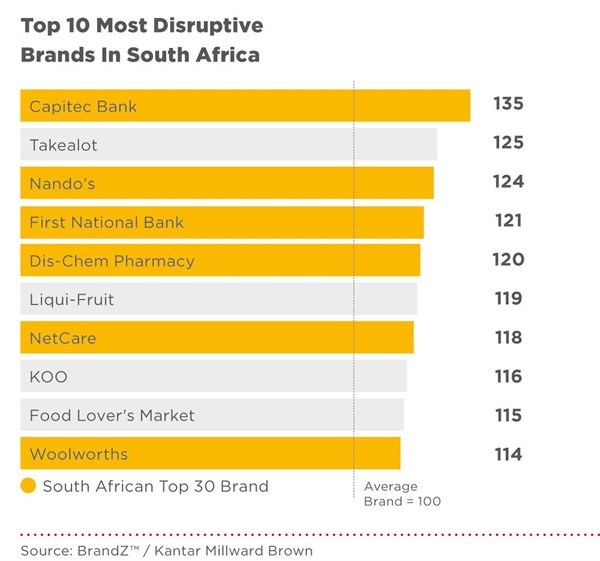When marketers are pushed to think of brands that have successfully disrupted, they tend to jump to the usual examples of Uber or Airbnb, followed often by Amazon and maybe even Apple. These brands may well be the textbook exemplars, but there are so many other less famous - and more local – cases that are worth sharing and learning from.
What can we learn from brands that have managed to grow in spite of market pressures?
Disruption is about being different
In order to change a market significantly, a brand should strive to be different in some relevant way to stand apart from the competition in the minds of consumers. Sometimes this can relate to tangible aspects of the product, perhaps driven by technology, but often it stems from dominating specific important moments in the consumer journey.
Brands that best leverage their distinctive assets to drive their power in the minds of consumers will differentiate themselves at moments that matter to maximize their chances of growth.
Flipping the script
Disruptors tend to change the way things are done. They challenge the status quo and are not afraid to set the category debate, in many instances transferring knowledge from other unrelated categories. Capitec epitomized this idea, attacking traditional banking head-on with opening on Sundays and simplified their offers. Following the success of grabbing attention, they backed up the excitement with competitive fees and an unparalleled branch experience.
Discounting is not the same as disrupting
On occasion, Takealot and other online retailers offer deep discounts, presumably in the hopes that they can help build more of a culture of online purchasing for consumers that have been traditionally wary of buying an item without the ability to hold it in their hands first. In reality, they’re training consumers to only buy items on special. Taken to the extreme, price sensitive e-shoppers can access huge discounts under significant time pressure on sites like OneDayOnly.co.za. A strategy that focuses on discounting alone will find it difficult to sustain any growth it achieves.
Tapping into technology trends
If we think about how life recently has been affected by technology, we can look to the tremendous uptake and usage of WhatsApp, which has disrupted messaging by turning the traditional texting category into something a bit more social. It can be argued that this application satisfies needs and blurs the boundaries between many different categories by catering for group and video chat.
Standard Bank’s Snapscan app has changed the payment landscape particularly in situations where merchants may not have access to bulky card machines. And ABSA managed a world-first with its ChatBanking, which allowed customers to make banking transactions through their social media accounts. Another interesting app that’s finding some momentum is SweepSouth, which gives customers access to a large number of vetted cleaners on-demand.
With fibre-optic internet finding its way into more and more homes, brands like ShowMax and Netflix are appearing on more television screens and computer monitors across the country. In addition, music on-demand from Apple Music or Google Play brings anything you want to listen to right to your fingertips. Services like these that allow customers to stream and/or download content are putting enormous pressure on the old broadcasting model.
These brands have used technology to rethink old categories, and to reframe them in ways that may have been unexpected. Of course, relying heavily on technology can be a risky move, as the pace of change reaches unprecedented heights. Successful brands will do their homework to make sure they’re tapping into a trend, not a fad, and will keep innovating to stay ahead of the competition.
Agile marketing is increasingly important
Changes to the way people choose, and the set of brands they select from will lead to substantial changes to the way they feel and behave. This means that disruption has a significant impact on the strength of relationship for all brands in the market. To cope, marketers need to behave as if they are in perpetual beta which means fast feedback is essential in quickly identifying opportunities to course correct and counter strong competitive moves. Apart from inoculating against the impact of disruptors, this agility can be used as a way to keep other brands on the defensive.
True disruption is rare, but bringing significant change to your category is certainly possible. Ensuring you lead the change will be important if your brand is to grow faster than others.
This article by Adhil Patel, Global Director, Brand at Kantar was first published in the 2018 BrandZ Top 30 Most Valuable South African Brands report.
  Disruption is generally tied to innovation and is about challenging the status quo of a category, usually to the benefit of all consumers. It forces the evolution of a category in some significant way. Brands that are successfully disruptive can quickly gain momentum and fuel rapid expansion. Four Top 30 brands including Capitec Bank, Nando’s, First National Bank, and Dis-Chem Pharmacy are ranked in the top five in disruption, and six Top 30 brands made the Top 10. South Africa’s Top 30 brands (other than the six in the Top 10) could all benefit from looking globally for fresh ideas and new approaches to spark creativity locally. This will help brands defend against foreign competition while strengthening relationships with customers. For brands figuring out how to disrupt, adapting technology in novel ways can have a dramatic impact on consumers, especially for South African consumers who seek memorable experiences and exposure to things new and exciting. However, disruption can also stem from more analogue approaches too. Absa’s Africanicity platform might be an example of a brand attempting disruption through communication, and will require support if the organization is to deliver on this promise. Click here to read the full report. |